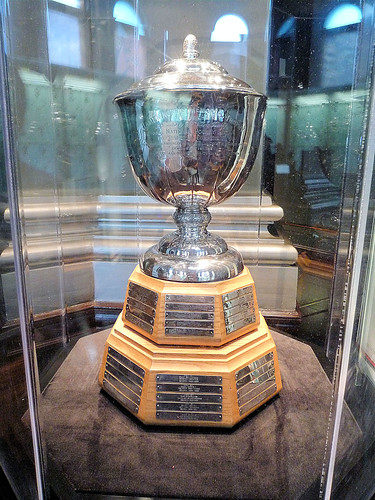
Drew Doughty– One Team Canada scout told TSN that the question he had was not whether or not Doughty was good enough to represent Canada in Vancouver, but whether or not he would be their number one defenseman. Take a look at that statement and then take at Doughty’s birth certificate. This season, he cemented himself as the early favorite as the top player among 1989 birth years and a future Norris winner as he propelled the upstart Kings to a playoff berth. At one point, the Kings held the best record in the Western Conference, an astonishing feat for a team that was picked by few to have a season of any significance.
Doughty more than doubled his formidable rookie totals across the board finishing with 16 goals, 43 assists, 59 points and a +20 rating. His 31 power-play points were only one shy of doubling up his total from last season and his five game-winning goals led all defenseman. Doughty logged nearly 25 minutes per game, playing in every situation with the enthusiasm of a second-year player and the poise of a veteran. Simply put, Doughty was the best defenseman in the league under 25 years of age and arguably the most complete defenseman at any experience level. Solid skating, sound hands, an accurate shot and phenomenal hockey sense made not only for the sort of stabilization a young team usually gets from a veteran but also for spectacular plays like this late-season goal against Phoenix:
Chris Pronger- From under-25 cornerstone to over-35 linchpin, Chris Pronger’s campaign was everything Doughty’s was plus plenty … of … nastiness. Though some new acquisitions integrated into their new teams almost seamlessly, Pronger looked as though he was born a Flyer. In a season marked by slumps, surges and no shortage of injuries, Pronger oscillated at will between tempered leadership and dynamic aggression. Whether it was staying at home to guard an empty net in order to extend a game or joining the rush to get a timely goal, Pronger did whatever the situation called for over and over again.
Pronger trailed only Duncan Keith in total ice time and only Scott Niedermayer in special-teams minutes played despite playing on a team with a rock solid top four that stayed healthy for the entire season. He controlled the game in all three zones on offense, keying the rush with confident breakout passes and scrambling defenses with a combination of a twelve-cylinder shot and a priest’s patience with the puck. Defensively, Pronger returned to the lateral range and tireless toughness that made him a Norris Trophy and Hart Trophy winner with the Blues. A big hitter who stood attackers up at the blue line and cleared the front of the net, Pronger had no problem earning the title of league’s dirtiest, nastiest player in a player poll published in ESPN the Magazine.
Duncan Keith– As perfectly as Pronger fit the Flyers’ personality, no blueliner defined his team’s identity quite like Duncan Keith. The league leader in minutes played used every second wisely, creating a mobile five-man crew that moved as a group and succeeded as a unit. Keith was the engine of the fastest car on the NHL track, making plays in every inch of the ice. He was a also an outstanding leader. Keith built up emerging rearguard Niklas Hjalmarsson all season, he stood up for partner Brent Seabrook after a vicious hit by Steve Wisniewski and he stepped up for the injured Brian Campbell after he sustained injuries as a result of a questionable hit by Alexander Ovechkin.
Keith was a defensive dynamo who faced the hottest line his opponents had going every night and top power-play units all season. Away from his own end, he was also second only to Mike Green in points (69) and assists (55). Like the other two picks as finalists, the completeness of Keith’s contribution makes his campaign remarkable. His speed, leadership, production and team success put him over the top as the most deserving candidate. All season long, he silenced critics with his play and, sometimes, his Gatorade bottle:
Chicago’s equalizer in the second period today exemplifies the excellence of Keith. He shuts down the play defensively, pursues the puck, gets it going in the other direction, cues the counterattack creatively and ultimately sets up a huge goal.